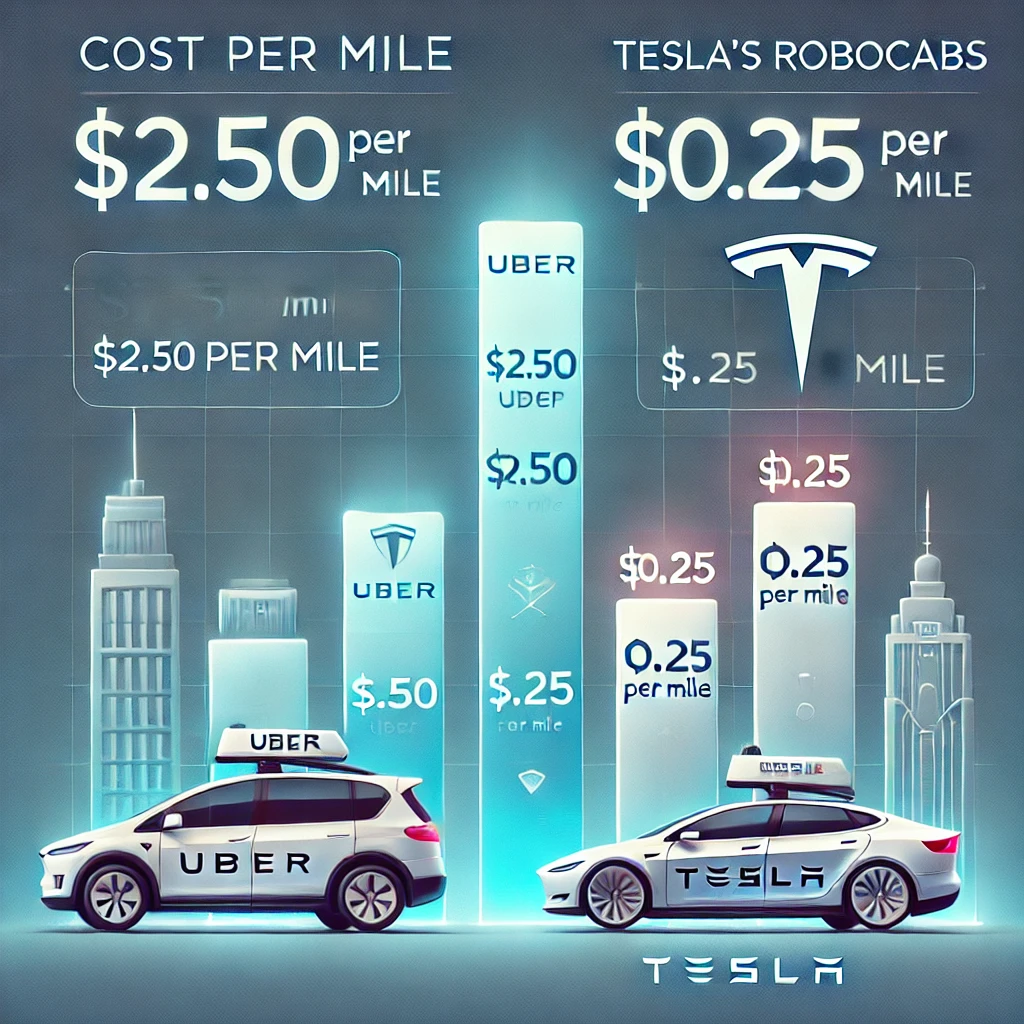
Tesla has been making headlines in 2024, not just for its electric vehicles (EVs) but for a bold leap into autonomous mobility: Cybercabs. These self-driving taxis, set to transform the ride-hailing industry, aim to make getting around cheaper, more efficient, and greener. But what exactly are these Cybercabs, and how do they fit into Tesla’s larger vision for transportation?
Background: Tesla’s Journey to Autonomy
Tesla has long been at the forefront of electric vehicle technology, but the company’s ambitions go far beyond just EVs. Since the introduction of its Autopilot feature in 2015, Tesla has been steadily working toward full vehicle autonomy. Elon Musk, Tesla’s CEO, has made it clear that Tesla’s goal is to create cars that can drive themselves, eliminating the need for human drivers entirely.
The idea of a “Cybercabs” fleet has been teased for years. Musk famously predicted back in 2019 that Tesla would have a million self-driving taxis on the road by 2020. While that timeline proved optimistic, the technological progress made in recent years has brought the idea much closer to reality. Tesla’s Full Self-Driving (FSD) system is the heart of the robocab initiative, using advanced AI, cameras, and sensors to navigate roads with minimal human intervention.
The Mechanics of Tesla’s Robocabs
Tesla’s Cybercabs aren’t just autonomous vehicles—they’re a whole new ecosystem of ride-hailing. These electric, driverless cabs are designed to be summoned through a Tesla app, similar to Uber or Lyft, but with a crucial difference: no human drivers. Here’s how it works:
- Full Self-Driving (FSD): Tesla’s Cybercabs are powered by its FSD software, which uses neural networks, 8 external cameras, 12 ultrasonic sensors, and radar to process vast amounts of data in real-time. This system allows the vehicle to interpret road conditions, avoid obstacles, and make decisions without human input.
- Electric Efficiency: The Cybercabs are fully electric, meaning zero emissions. Tesla has optimized its vehicles for range and energy consumption, making them cost-effective and environmentally friendly. Without the need for a driver, operating costs are expected to be significantly lower than traditional taxis.
- On-Demand Mobility: Just like today’s ride-hailing services, users can summon a Tesla robocab via an app. Tesla envisions its vehicles being used for everything from quick urban commutes to longer trips, with the potential for users to schedule recurring rides or even share rides with others in a “robo-pooling” model.
- Fleet Ownership: What makes Tesla’s Cybercabs concept unique is its fleet ownership model. Tesla owners can opt to add their cars to the Cybercabs network when they’re not using them. This transforms individual car ownership into a potential revenue stream for Tesla owners, where their cars can autonomously provide rides to others.

Case Studies: Tesla’s Robocabs in Action
While Tesla’s fully operational Cybercabs are not yet widespread, there are promising test cases and developments.
- Las Vegas Pilot Program (2024): Tesla launched a pilot Cybercabs program in Las Vegas, allowing users to book rides via the Tesla app. Initial reports showed impressive safety records, with the cars handling dense traffic and even complex intersections on the Las Vegas Strip with ease. Early feedback highlighted the seamless experience, though some users expressed hesitation over relinquishing full control to the car.
- Fremont Factory Use Case: Tesla is using a fleet of its Cybercabs internally at the Fremont factory to shuttle employees and parts around the massive facility. This closed-loop system has helped Tesla refine its software in a controlled environment while demonstrating the real-world efficiency of autonomous transport.
Future Outlook: Tesla’s Grand Vision
Tesla’s Cybercabs are just the beginning. Musk has suggested that future versions of Tesla’s vehicles will be fully autonomous without even steering wheels or pedals. The company is also exploring advanced AI models to improve the decision-making abilities of its cars, making them capable of handling the most complex urban environments.
On a larger scale, Tesla’s Cybercabs could help reduce congestion, lower emissions, and make personal car ownership less necessary in cities. As the technology matures, we may even see a future where Cybercabs dominate the ride-hailing landscape, making human-driven taxis a thing of the past.
Challenges and Controversies
No innovation comes without hurdles, and Tesla’s Cybercabs are no exception.
- Regulation: Autonomous driving is still a legal grey area in many places. Different countries and even individual U.S. states have different regulations around self-driving vehicles, and it could take years before Tesla’s robocabs are legally allowed everywhere.
- Safety Concerns: While Tesla’s FSD technology has made great strides, there are still concerns about its reliability. High-profile accidents involving Tesla’s semi-autonomous systems have raised questions about whether the technology is ready for mass deployment. Tesla will need to prove that its robocabs are safer than human drivers to gain widespread acceptance.
- Ethical Dilemmas: Autonomous vehicles bring up a host of ethical issues. How should a Cybercabs make decisions in life-or-death scenarios? Tesla’s AI will need to navigate these moral quandaries in ways that satisfy both regulators and the public.
The Road Ahead
Tesla’s Cybercabs represent a transformative shift in how we think about mobility. While we are still in the early days of this technology, the potential benefits—reduced costs, lower emissions, and greater convenience—are enormous. As Tesla refines its FSD technology and expands its pilot programs, it’s likely that we’ll see more cities welcoming autonomous fleets in the near future.
In many ways, Tesla is driving us toward a future where cars are not just modes of transport but autonomous, AI-powered ecosystems that reshape our cities and our lives.



